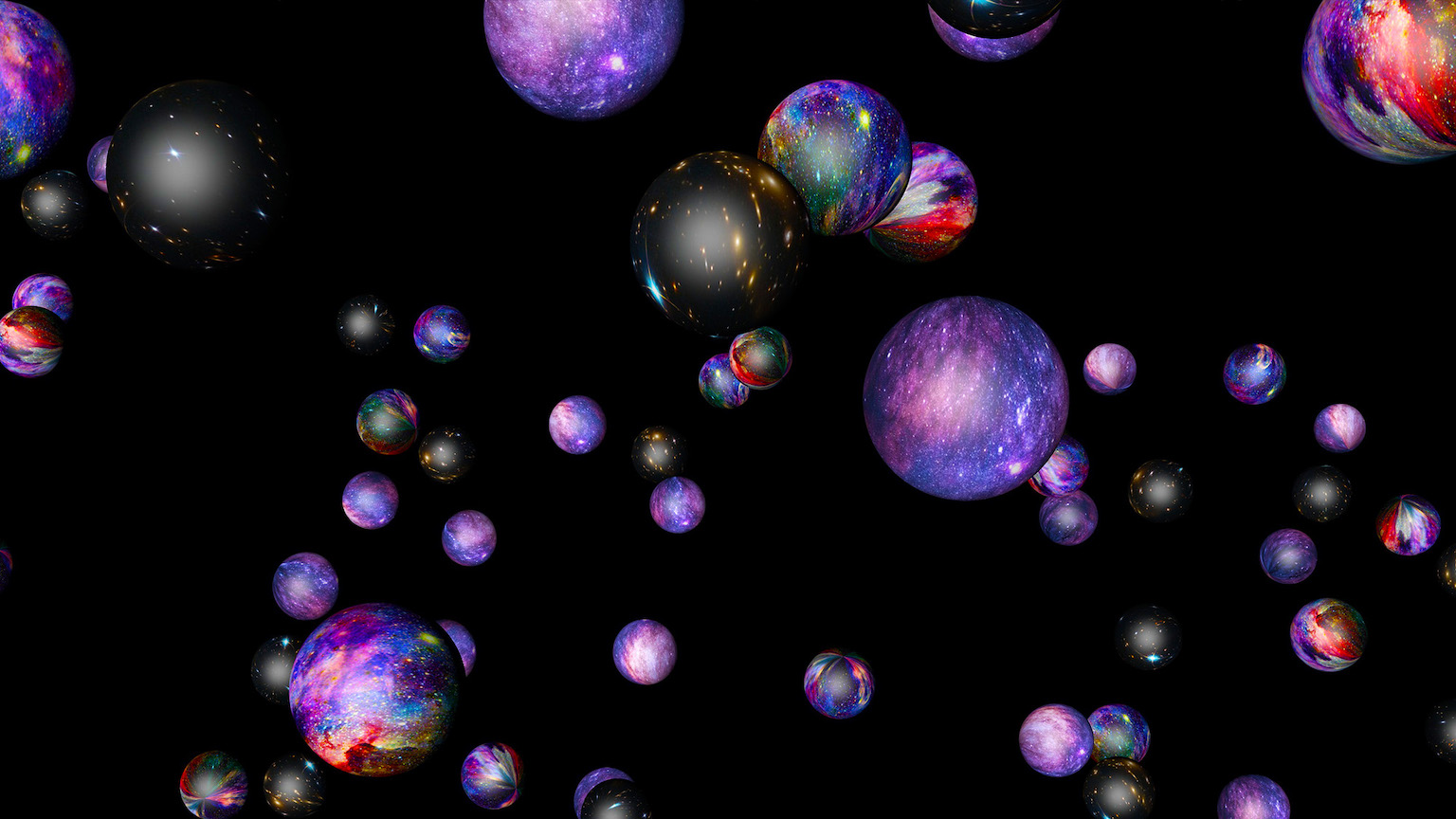This Is How Quantum Physics Creates The Largest Cosmic Structures Of All
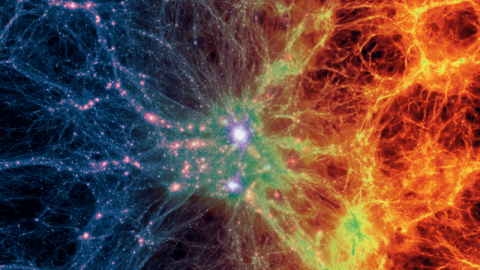
How can physics on the smallest scales affect what the Universe does on its largest ones? Cosmic inflation holds the answer.
On a macroscopic level, the Universe appears to be entirely classical. Gravity can be described by the curvature of space according to the rules of General Relativity; electromagnetic effects are perfectly well-described by Maxwell’s equations. Only on ultra-tiny scales do quantum effects begin to come into play, showing themselves in features like atomic transitions, absorption and emission lines, the polarization of light, and vacuum birefringence.
And yet, if we extrapolate back to the earliest stages of the Universe, every relevant interaction that occurred was purely quantum in nature. Individual quantum particles and fields interacted on short scales and at enormous energies, leading to many observables today that have a quantum legacy imprinted on them. In particular, the largest galactic and supergalactic structures owe their origins to quantum physics, too. Here’s how.
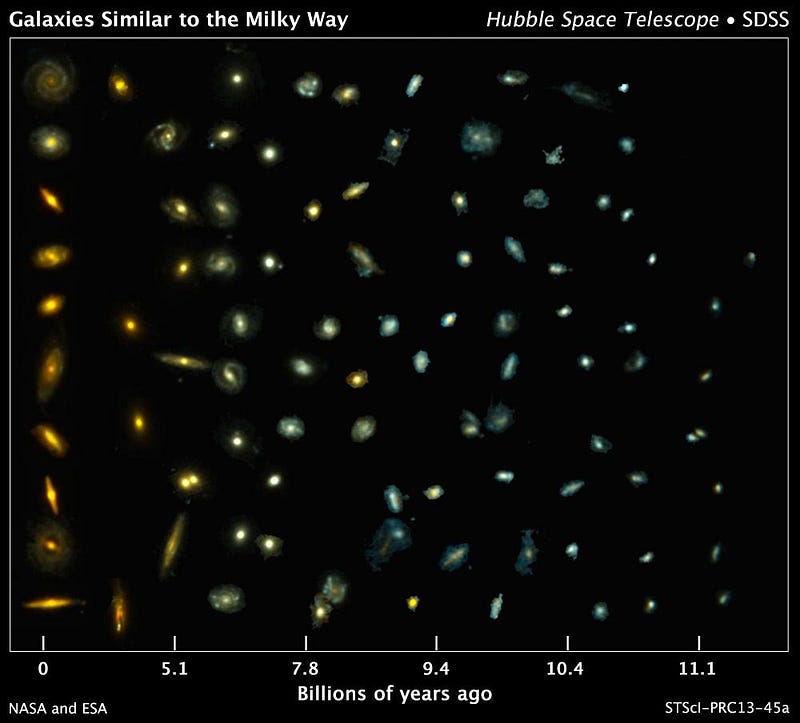
If we want to look back in time, all we have to do is look to the Universe as it appeared at greater and greater distances from us. Because light only travels at a finite speed, the light we see today that arrives after a journey of one billion years corresponds to light that was emitted a billion years ago: a billion years closer to the Big Bang.
When we look in this fashion, we not only see that individual galaxies (above) have evolved, growing larger, more massive, and redder overall in color, but that the Universe as a whole has grown clumpier, more clustered, and with a more pronounced web-like structure. Although our Universe might seem to be practically uniform on the largest cosmic scales, particularly at early times, there must have been initially overdense and underdense regions in order to enable this cosmic web to form and grow.
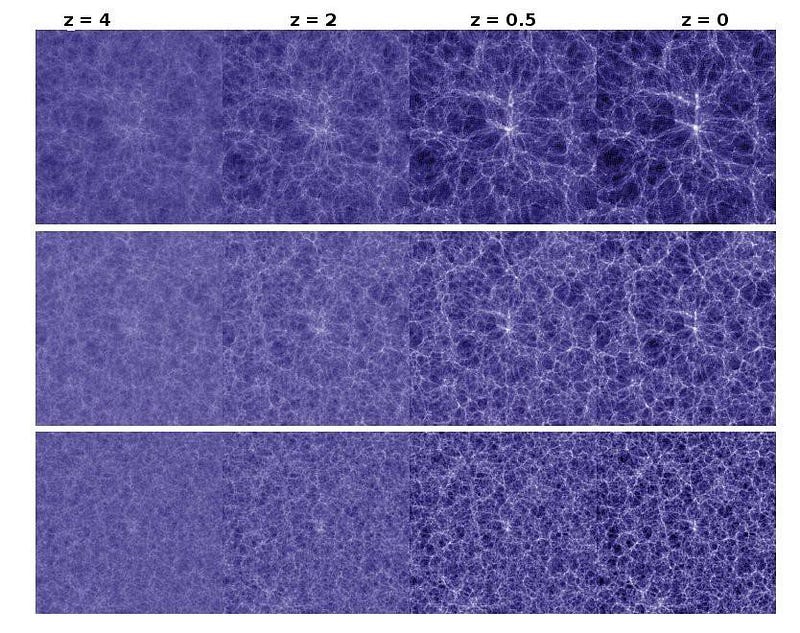
Because we run out of visible structures to probe in the early Universe — not only in practice but also in principle — we have to extrapolate how structure grew during the first few hundreds of millions of years: until the first stars and galaxies can be observed. While our theories are very good in this regime, we have to compare what we see with observables, or it’s all for naught.
Thankfully, though, the Universe provides us with another probe of the early seeds of modern cosmic structure: the imperfections in the leftover glow from the Big Bang: the cosmic microwave background. What we perceive as temperature fluctuations in the early Universe, as locations slightly colder or slightly hotter than the average, are actually related to the density fluctuations that will grow into the large-scale structure we observe today.
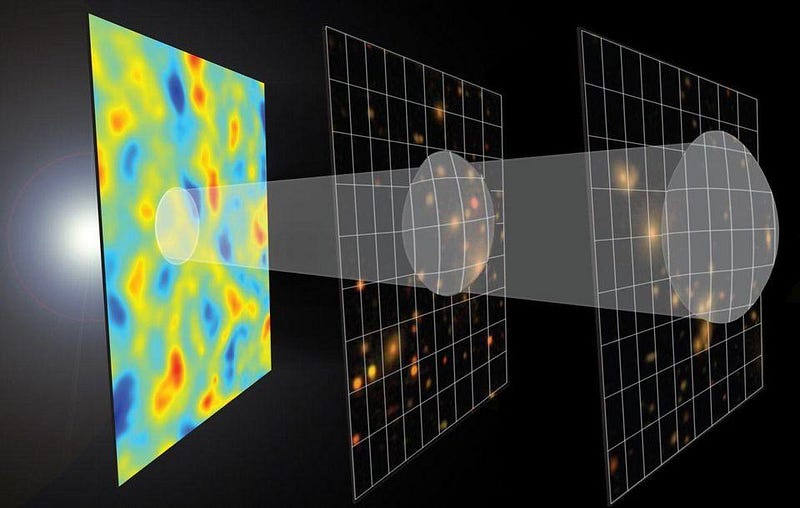
The Big Bang’s leftover glow — the cosmic microwave background (CMB) — dates back to a time where only ~380,000 years had passed since the Big Bang event itself. In all directions, no matter where on the sky we look, we see that there’s radiation coming towards us at almost the same exact temperature: 2.725 K.
But the imperfections in that temperature, although they’re only off from the average by a few tens or hundreds of microkelvin, are enormously important. The regions that appear slightly colder have the same radiation as any other region, but have slightly more matter, meaning the photons that leave those regions have to lose more energy due to gravitational redshift than in the average region. Conversely, slightly hotter-than-average regions are underdense, and so the hot-and-cold spots we see correspond to regions of greater or lesser density than average.
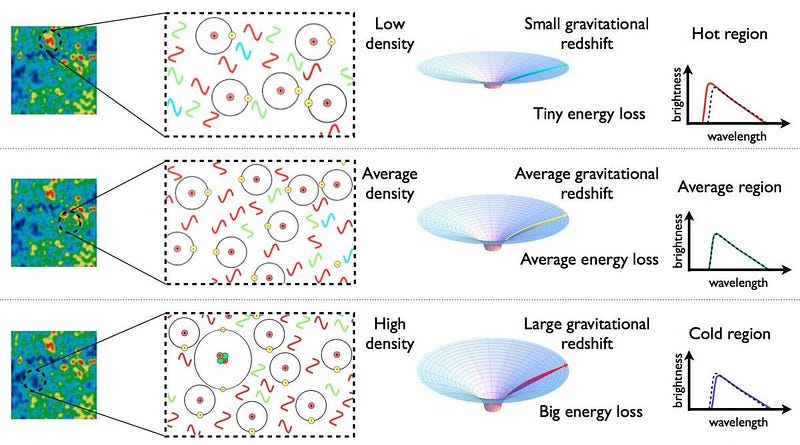
We can take the measurements of what we actually observe in the CMB and calculate what the initial fluctuations were like: the ones the Universe was born with at the onset of the Big Bang, rather than what they evolved into hundreds of thousands of years later.
When we do that, we find that in order to get the specific pattern of peaks-and-valleys when we look on larger or smaller angular scales, the Universe had to be born with an almost scale-invariant spectrum of these fluctuations. There are slightly larger-magnitude fluctuations on larger scales and slightly smaller-magnitude fluctuations on smaller scales, but there’s only a few percent difference overall. The pattern we see in the modern-day CMB reflects not only what those initial fluctuations were, but how they evolved as the Universe expanded, cooled, and gravitated over those first few hundred thousand years.
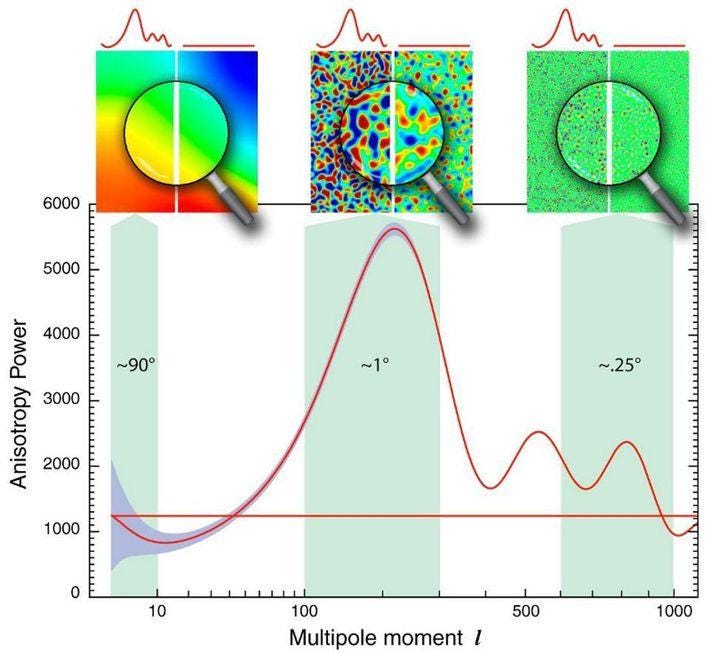
So where, then, did these initial density fluctuations come from? Why wasn’t the Universe born perfectly smooth?
The answer to those questions comes from the very theory that preceded, set up, and gave rise to the Big Bang: cosmic inflation. Before the Universe was filled with particles, antiparticles and radiation — before it was cooling and becoming less dense while it was expanding — there was a phase where it was filled with some sort of vacuum energy, or energy inherent to the fabric of space itself.
During this inflationary phase, the Universe was expanding exponentially, which means the expansion rate does not change as time goes on. Distances double every tiny fraction-of-a-second, which drives any particles away from one another, gives our observable Universe the same properties everywhere, and stretches the Universe to a state that’s indistinguishable from flat.
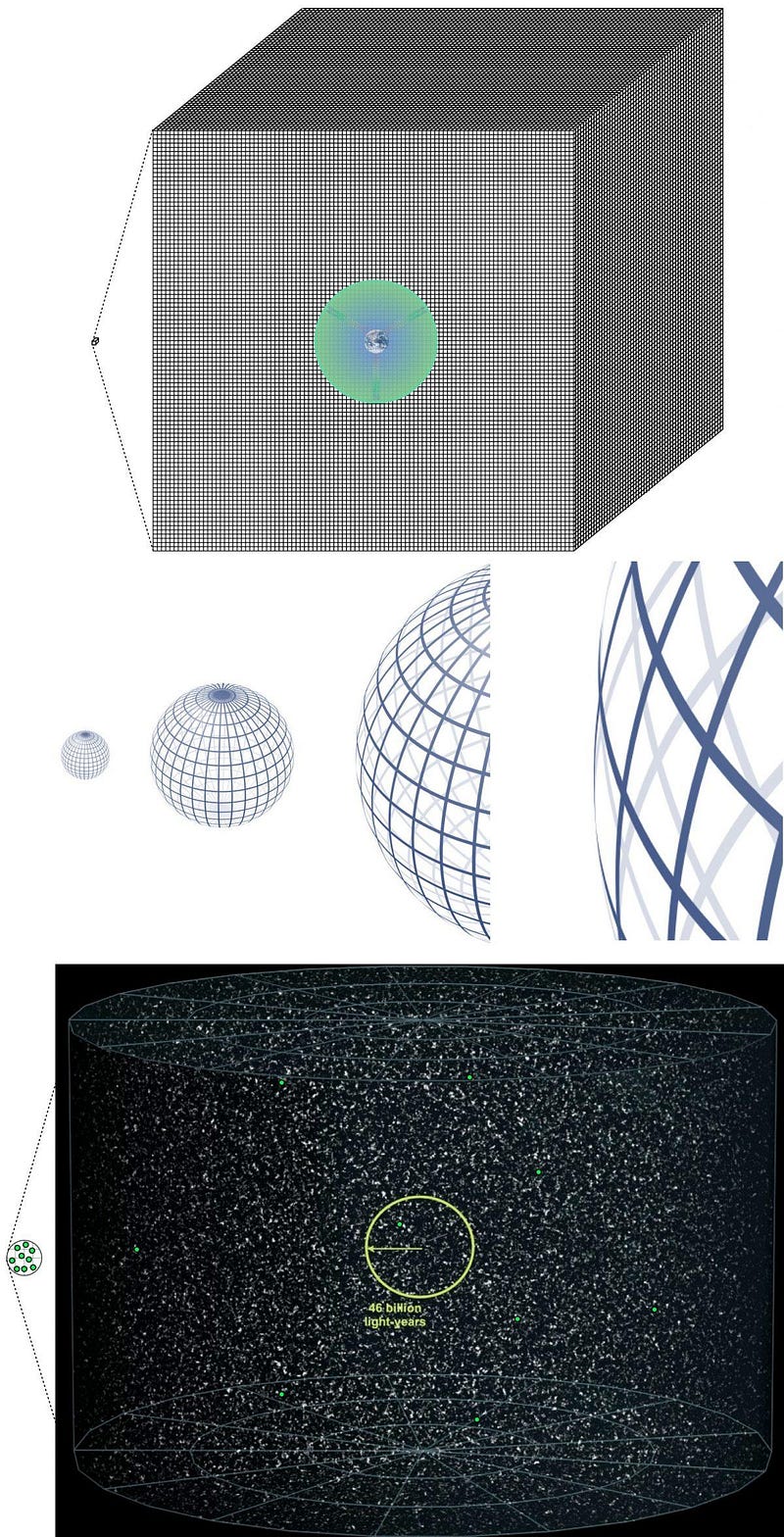
In short, an inflationary phase precedes and sets up the Big Bang. When inflation ends, all of that energy that was inherent to space gets dumped into matter, antimatter and radiation: the full suite of particles and fields allowed by the Standard Model and the laws of physics.
But it’s only an approximation that the energy density in every location will be exactly the same. You see, just like every field in the Universe, whatever field is ultimately responsible for inflation must also inherently be a quantum field. And every quantum field doesn’t just have a value that remains constant over time, but it has field fluctuations and excitations inherent to it: these quantum fluctuations cannot be ignored. Since inflation is a period of time where the energy of the Universe is tied up in a quantum field inherent to space itself, then this field, too, will have quantum fluctuations, which correspond to regions of slightly greater-or-lesser energy than average.
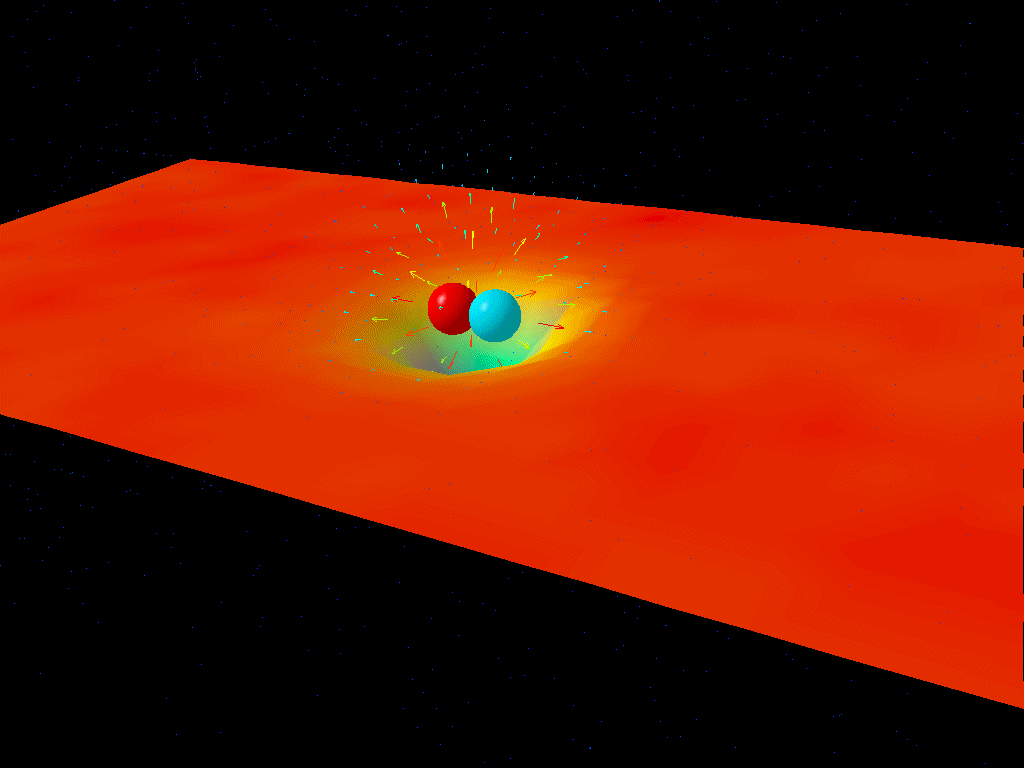
These fluctuations start out on very small scales: the very same quantum fluctuations that we often visualize as particle-antiparticle pairs popping into existence for a very brief amount of time, then popping out of existence when the re-annihilate again.
But during inflation, the fabric of space expands too quickly, and drives these positive and negative fluctuations away from one another so extravagantly that they cannot re-annihilate. Instead, they simply get stretched across the Universe, and then new ones get superimposed atop the old ones. By the time that inflation comes to an end, the Universe has an almost (but not quite) set of scale-invariant density fluctuations on every scale that we can possibly observe.
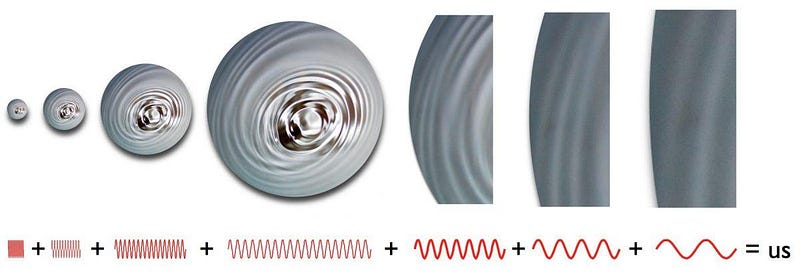
Owing to these quantum fluctuations generated during inflation, the Universe, at the onset of the Big Bang, will have regions of space on all angular scales that depart from the mean density by about 1-part-in-30,000. Over time, gravitation will work to collapse the overdense regions and steal matter from the underdense regions, while radiation works to stream out of or into regions that depart from that average density.
The combination of that effect with interactions between particles, radiation, and other particles serve to create the fluctuation patterns we see in the CMB today, as well as the overdense and underdense regions that grow into the cosmic web of large-scale structure we see today. We can trace all of it back to its inflationary origin, which is not only consistent with everything we know and observe about the Universe, but demonstrates the necessity of inflation being driven by a quantum field.
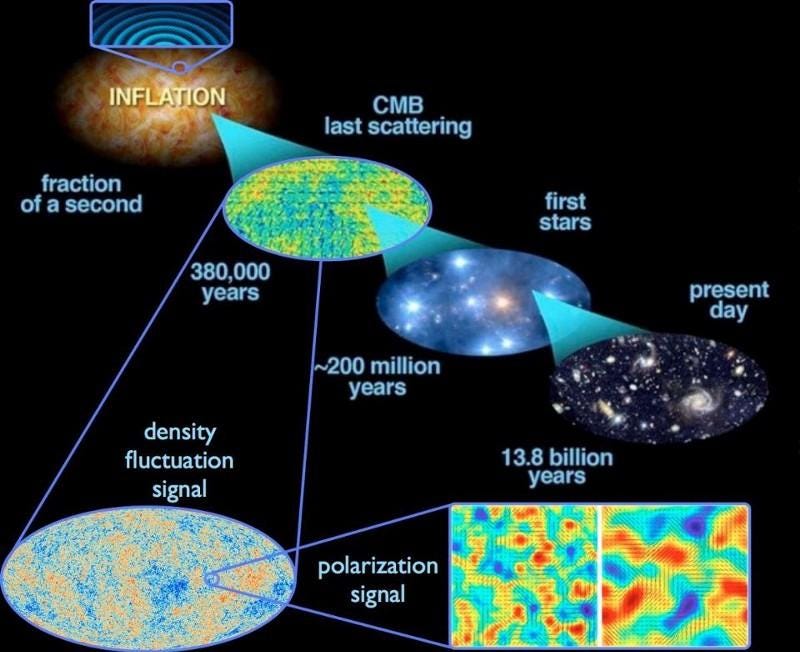
If not for quantum physics, the Universe would have been born perfectly smooth, with every region of space having the exact same temperature and density as every other region. As time went on, we would still have matter win out over antimatter, form the light elements through nucleosynthesis, and then create neutral atoms as the Universe expanded and cooled.
But we wouldn’t form stars and galaxies the way our Universe did. It would take many billions of years for even the first ones to form: many hundreds of times longer than we actually see. The existence of enormous galaxy clusters and a large-scale cosmic web would be forbidden, as the seeds of structure wouldn’t be there for them to grow. And dark energy would be the final nail-in-the-coffin, preventing the largest structures from ever forming.
The only reason we have them at all is because of the quantum nature of our Universe. It’s only because of the connection between the smallest and the largest scales — the quantum and the cosmic — that we can make sense of our Universe at all.
Ethan Siegel is the author of Beyond the Galaxy and Treknology. You can pre-order his third book, currently in development: the Encyclopaedia Cosmologica.
